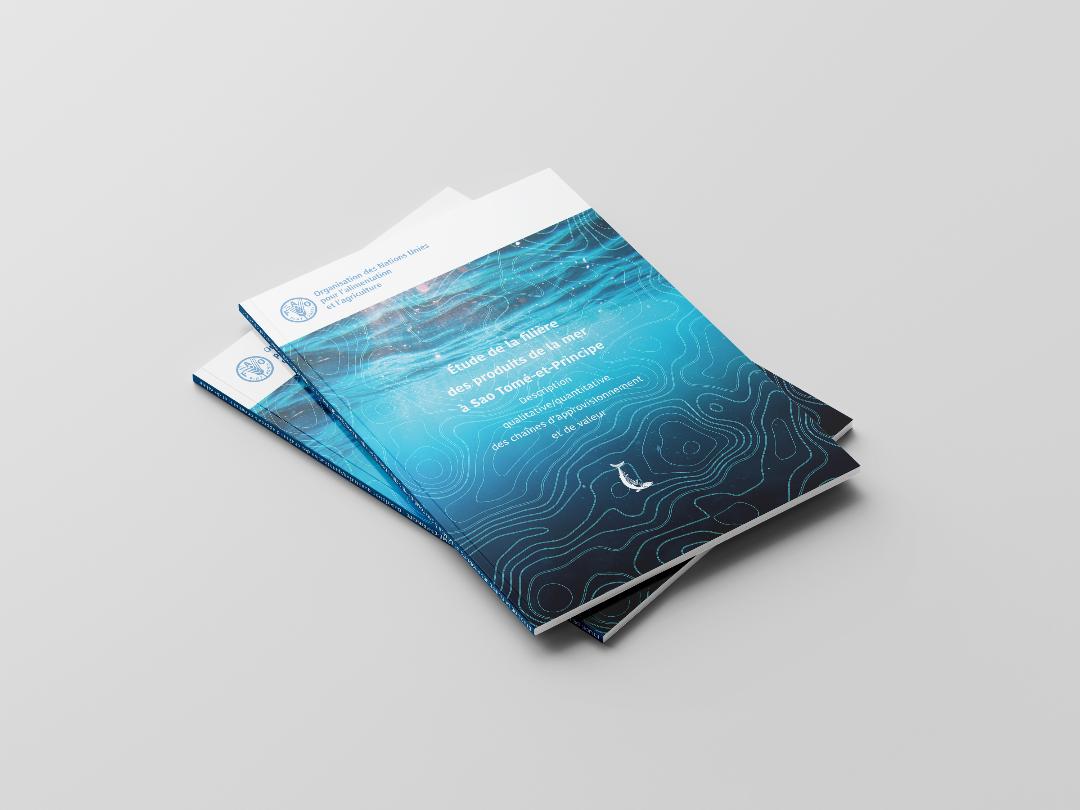Food and Agriculture Organization of the United Nations (FAO), 2019





Context
The fishing industry plays a vital role in the economic and social development of São Tomé and Príncipe, despite the limited potential for resource development due to unfavorable physical and environmental conditions. The country’s narrow insular shelf, lack of coastal upwellings, and absence of large estuaries limit its fisheries resources. Nevertheless, coastal fishing remains a significant source of employment and income for a considerable portion of the population.
The fishing sector in São Tomé and Príncipe is structured into three main segments:
- Production Segment: Comprising both national and foreign components, with the foreign element mainly represented by European Union tuna vessels.
- Processing Segment: Primarily led by women (called “palayès”) who engage in small-scale wholesale trade and supply hotels.
- Artisanal Transformation Segment: Also dominated by women who are involved in the traditional processing of fish products.
An in-depth value chain analysis identified six national economic agents within the industry, such as artisanal fisheries, semi-industrial fisheries, and wholesale traders, as well as a seventh foreign agent representing industrial fishing. Eleven sub-sectors were identified, nine of which are driven by artisanal fishing (five for fresh fish and four for processed fish) and two by semi-industrial fishing, focused solely on fresh fish.
Objectives
The primary objective of this case study was to analyze the fishing sector’s value chain in São Tomé and Príncipe and identify the industry’s weaknesses, opportunities, and potential growth areas. The specific goals were:
- Assess the sector’s structure and agents to provide clear insights into their operations.
- Highlight the key constraints facing the fishing industry.
- Identify opportunities for growth, particularly in relation to the hotel sector and the potential for marketing processed fish products.
Solution
To address the issues within the fishing sector, several improvements and strategic actions were identified:
- Strengthening Regulations: Enforcement of fishing regulations to prevent overfishing and harmful practices.
- Improvement of the Cold Chain: Reducing post-capture losses by enhancing the cold storage infrastructure.
- Hygiene and Sanitation: Implementing and enforcing basic hygiene standards across the entire value chain.
- Energy Constraints: Tackling the energy shortages that disproportionately affect the fishing industry.
- Professionalization and Training: Regulating the role of “palayès” (women traders) to streamline the marketing system and enhance efficiency.
- Access to Financing: Developing tailored financing mechanisms to support fishing activities.
- Increasing Semi-Industrial Fishing Efficiency: Upgrading semi-industrial fishing practices to boost productivity.
Additionally, the study proposed measures to capitalize on growing market opportunities driven by the tourism industry, particularly the high demand for fish products in hotels, as well as the potential for promoting processed and elaborated fish products.
Results
The fishing sector in São Tomé and Príncipe contributed significantly to the national economy. In 2015, the sector generated an added value of 588.2 billion Dobras (€25.9 million), accounting for 9% of the country’s GDP. The production segment dominated the industry, representing 63% of the total value added, with fresh fish products leading the market share. However, the artisanal transformation of fish products contributed only 4% to the total value, as processing activities often occurred by necessity due to a lack of fresh fish preservation methods or in cases of unsold goods.
A comparative analysis between the national and foreign fishing industries revealed that despite the higher tonnage of foreign catches, the added value generated by foreign fisheries was minimal. This was attributed to the lack of landings at the Port of São Tomé, the absence of local sailors and observers on European vessels, and the lack of processing, storage, and supply infrastructure that deprived the country of potential economic benefits.
Conclusion
The fishing sector in São Tomé and Príncipe has significant potential for growth, especially in artisanal fisheries and value-added processing. However, challenges such as inadequate regulations, poor infrastructure, and energy constraints must be addressed to fully harness this potential. By strengthening regulatory frameworks, improving the cold chain, and enhancing the professionalization of actors in the industry, the sector could increase its contribution to the national economy and improve the livelihoods of those involved in fishing-related activities.
Context:


